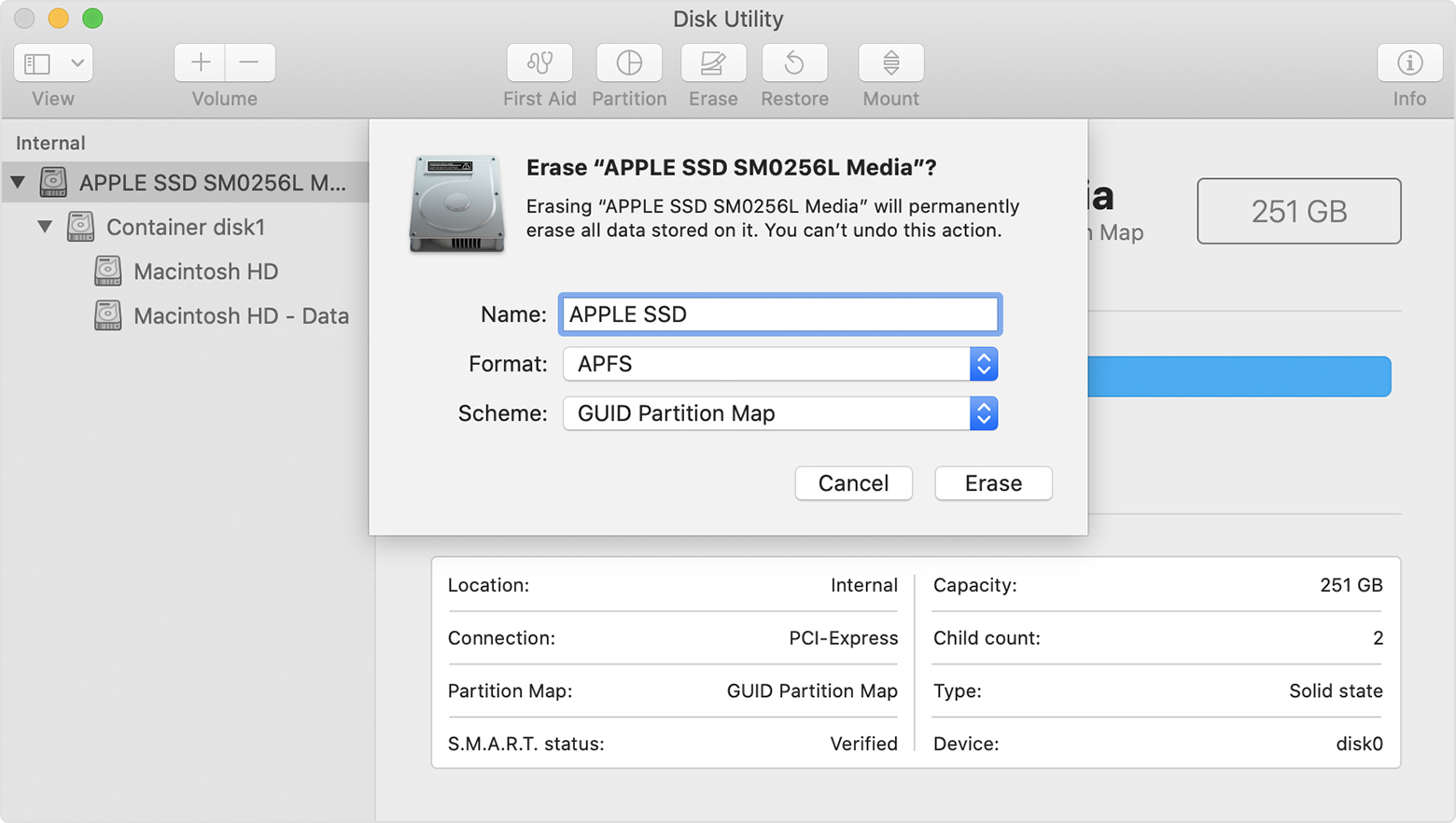

By default, you’ll see the stats about your boot drive. This includes USB drives, SSDs, internal hard drives, SD cards, disk images and anything else that can store data. The main Disk Utility window displays all the storage devices currently connected to your system. Open Disk Utility from /Applications/Utilities/Disk Utility.app or type “Disk Utility” into Spotlight.Ģ. If you purchase a new hard drive formatted with a Windows-centric flavor (NTFS or FAT32), you’ll need to format it in a Mac-friendly format before you can get the most use out of it.ġ. Formatting a drive erases all its contents, preparing it for new data and replacing the file table. The application’s primary use is to format hard drives with Disk Utility. But those aren’t nearly as useful as Disk Utility, an app that many Mac users would use if they knew you could format hard drives with Disk Utility. We’ve already covered a few, like Activity Monitor and Console. In here, you’ll find many mysterious applications with opaque uses and confusing titles. Each volume within an APFS container can have its own APFS format-APFS, APFS (Encrypted), APFS (Case-sensitive), or APFS (Case-sensitive, Encrypted).There’s a dark corner of your Applications folder that few users dare go: the Utilities folder. You can easily add or delete volumes in APFS containers. For example, folders named “Homework” and “HOMEWORK” are two different folders. For example, folders named “Homework” and “HOMEWORK” are two different folders.ĪPFS (Case-sensitive, Encrypted): Uses the APFS format, is case-sensitive to file and folder names, and encrypts the volume. Choose this option if you don’t need an encrypted or case-sensitive format.ĪPFS (Encrypted): Uses the APFS format and encrypts the volume.ĪPFS (Case-sensitive): Uses the APFS format and is case-sensitive to file and folder names. Each volume uses only part of the overall container, so the available space is the total size of the container, minus the size of all the volumes in the container.Ĭhoose one of the following APFS formats for Mac computers using macOS 10.13 or later.ĪPFS: Uses the APFS format. If desired, you can specify reserve and quota sizes for each volume. When a single APFS container has multiple volumes, the container’s free space is shared and is automatically allocated to any of the individual volumes as needed. macOS 10.13 or later supports APFS for both bootable and data volumes.ĪPFS allocates disk space within a container (partition) on demand. While APFS is optimized for the Flash/SSD storage used in recent Mac computers, it can also be used with older systems with traditional hard disk drives (HDD) and external, direct-attached storage.
:max_bytes(150000):strip_icc()/003B-format-mac-drives-using-disk-utility-2260076-bf13a2949c4848bfb98f59ff094eaadf.jpg)

Apple File System (APFS), the default file system for Mac computers using macOS 10.13 or later, features strong encryption, space sharing, snapshots, fast directory sizing, and improved file system fundamentals.


 0 kommentar(er)
0 kommentar(er)
